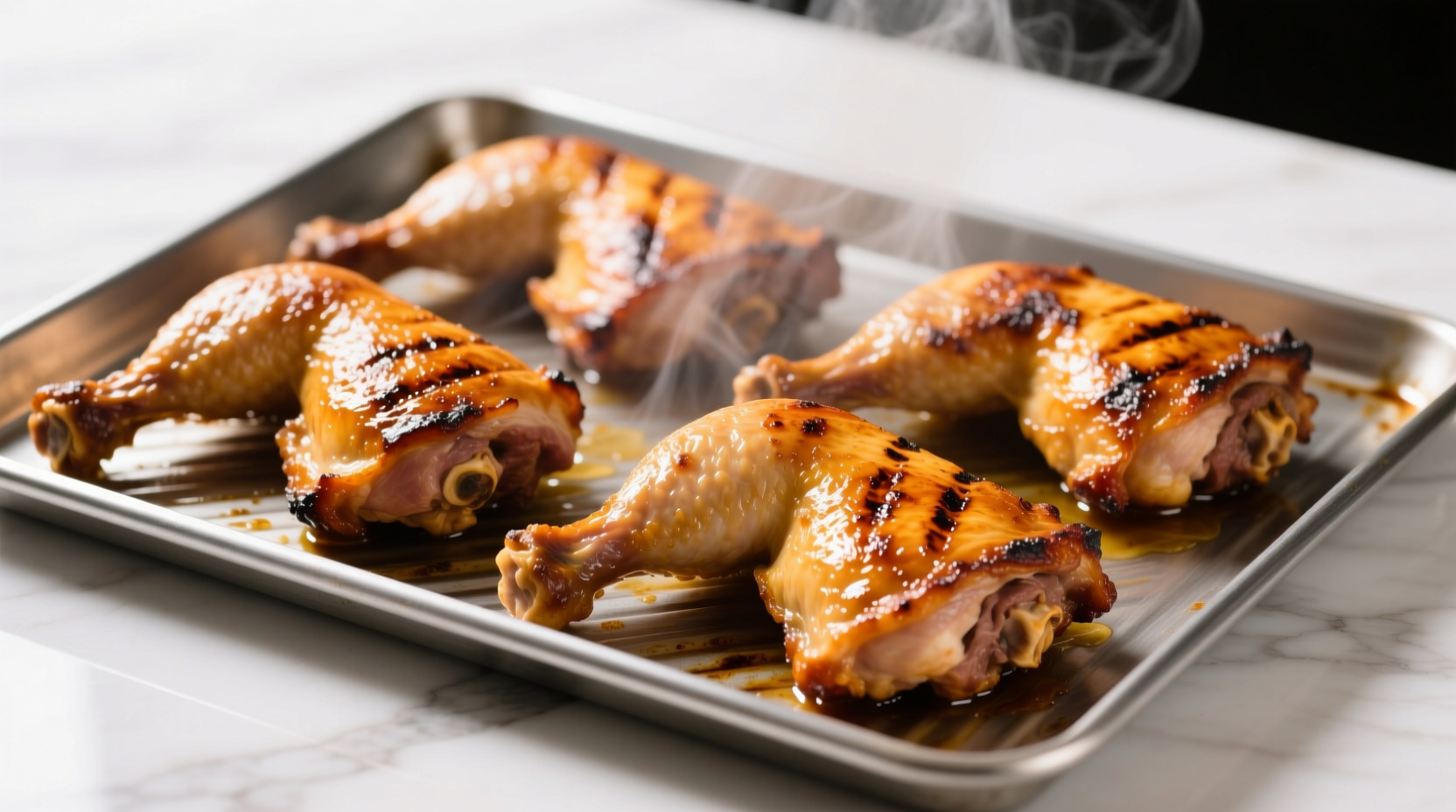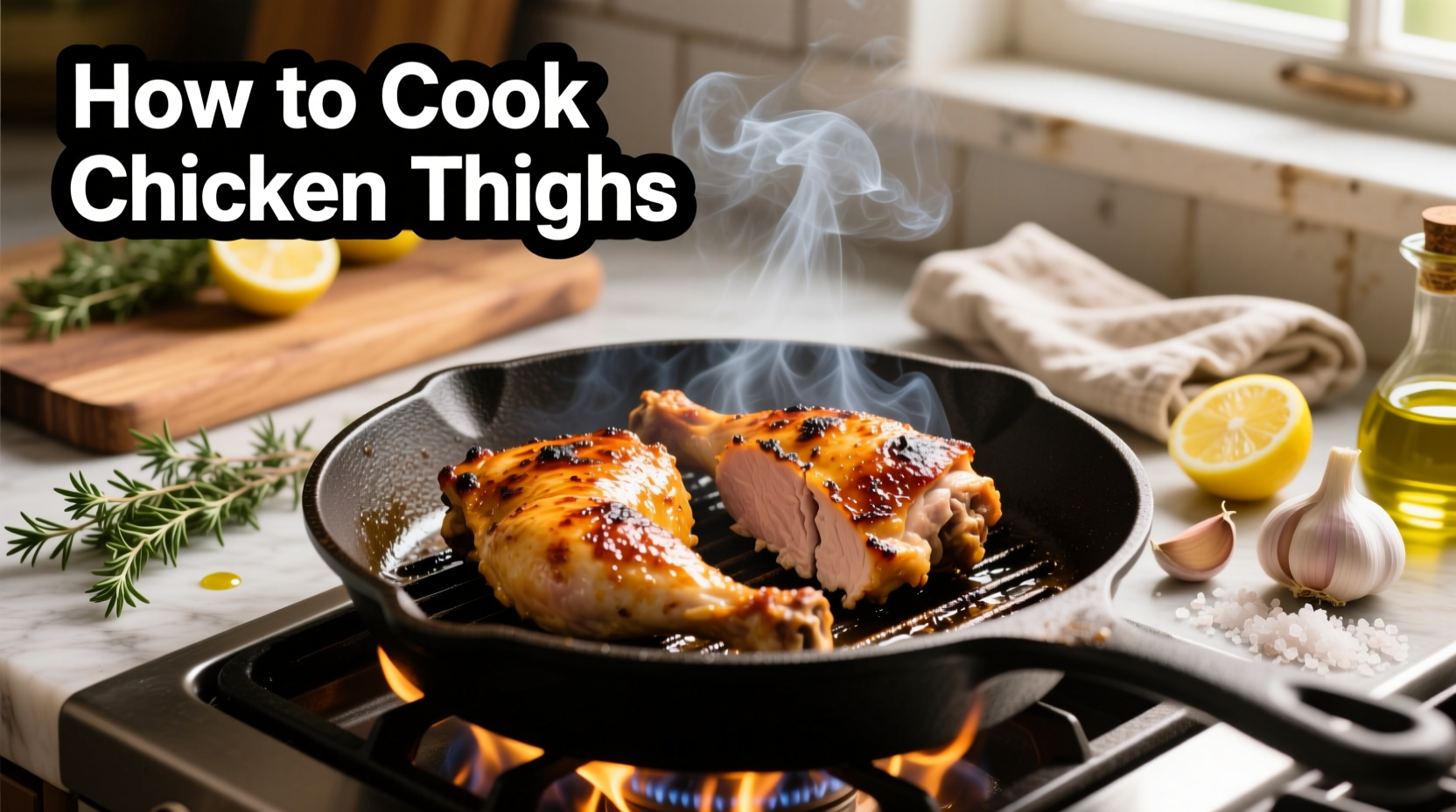| Cooking Method | Temperature | Time | Key Technique |
|---|---|---|---|
| Oven Roasting | 400°F (204°C) | 35-40 minutes | Place skin-side up on baking sheet |
| Pan-Searing | Medium-high heat | 20-25 minutes | Sear skin-side down first, finish in oven |
| Grilling | Medium heat (350-400°F) | 25-30 minutes | Direct then indirect heat method |
| Air Frying | 380°F (193°C) | 18-22 minutes | Flip halfway through cooking |
Why Chicken Thighs Deserve a Place in Your Weekly Rotation
Chicken thighs offer superior flavor and moisture retention compared to breast meat, thanks to their higher fat content and dark meat composition. According to USDA Food Safety and Inspection Service guidelines, properly cooked poultry must reach 165°F internal temperature to eliminate foodborne pathogens while maintaining optimal texture. Unlike chicken breasts that dry out quickly, thighs remain juicy even when cooked slightly beyond the minimum temperature, making them ideal for beginner and experienced cooks alike.
Essential Preparation Techniques for Perfect Results
Before cooking, properly prepare your chicken thighs for maximum flavor and texture. Pat thighs thoroughly dry with paper towels—this critical step creates the perfect surface for browning and crispy skin formation. For bone-in thighs, score the skin in 2-3 places to prevent curling during cooking. Season at least 30 minutes before cooking to allow flavors to penetrate; for best results, salt thighs 12-24 hours in advance and refrigerate uncovered to dry the skin surface.
Oven Roasting: The Hands-Off Approach for Weeknight Dinners
Preheat your oven to 400°F with rack positioned in the upper third. Arrange thighs skin-side up on a rimmed baking sheet lined with parchment paper. For extra-crispy skin, place thighs directly on a wire rack set over the baking sheet. Roast for 35-40 minutes until skin reaches golden brown and internal temperature hits 165°F. The USDA confirms that dark meat may remain slightly pink near bones when properly cooked—rely on thermometer readings rather than color.
Pan-Searing Method: Restaurant-Quality Results at Home
Heat 1 tablespoon oil in an oven-safe skillet over medium-high heat until shimmering. Place thighs skin-side down without crowding the pan. Cook undisturbed for 6-8 minutes until skin achieves deep golden color and releases easily from the pan. Flip thighs and transfer skillet to a 400°F oven for 15-20 minutes until fully cooked. This two-stage method replicates professional kitchen techniques that home cooks can easily master for consistently juicy results.
Grilling Technique for Summer Entertaining
Prepare your grill for two-zone cooking—direct heat on one side, indirect on the other. Start thighs skin-side down over direct heat for 5-7 minutes to render fat and create grill marks. Move to indirect heat, cover grill, and continue cooking 20-25 minutes, turning occasionally. This method prevents flare-ups while ensuring even cooking. The American Grill Association recommends maintaining medium heat (350-400°F) to avoid charring the exterior before the interior reaches safe temperature.
Air Fryer Method: Quick Weeknight Solution
For busy weeknights, air fryers deliver crispy results in half the time. Preheat air fryer to 380°F, working in batches if necessary. Cook thighs for 18-22 minutes, flipping halfway through, until skin reaches 165°F internal temperature. The circulating hot air creates remarkably crispy skin without deep frying. This method works especially well for boneless thighs, which typically require 14-16 minutes total cooking time.
Doneness Verification: Beyond the Thermometer
While a digital thermometer remains the most reliable method, experienced cooks use additional visual cues. Properly cooked thighs will have clear juices when pierced, and the leg joint should move freely. The meat should feel firm but yield slightly when pressed. Remember that carryover cooking continues for 5-10 minutes after removal from heat, so pull thighs at 160°F for optimal results. Always allow 5-7 minutes resting time before serving to redistribute juices.
Troubleshooting Common Cooking Issues
Skin not crispy? Your pan or oven wasn't hot enough before adding thighs, or you didn't properly dry the skin surface. Next time, increase initial heat and ensure thorough drying.
Uneven cooking? This often happens when thighs vary significantly in size. Group similar-sized pieces together or adjust cooking times accordingly.
Dry results? Overcooking is the culprit. Use a thermometer and remove thighs at 160°F, allowing carryover cooking to reach 165°F during resting.
Simple Flavor Variations to Keep Meals Exciting
Transform basic chicken thighs with global flavor profiles. For Mediterranean style, rub with lemon zest, garlic, and oregano before cooking. Create Asian-inspired thighs with soy sauce, ginger, and sesame oil marinade. Try Cajun seasoning with smoked paprika and cayenne for bold flavor. The versatility of chicken thighs makes them perfect for experimenting with different spice blends while maintaining reliable results.

Storage and Leftover Ideas
Refrigerate cooked thighs within two hours in airtight containers for up to four days. For meal prep, shred cooled meat and use in salads, tacos, or grain bowls. Freeze whole or shredded thighs for up to three months. When reheating, place thighs in a 350°F oven with a splash of broth to maintain moisture—microwaving often results in rubbery texture.
FAQ
Can I cook frozen chicken thighs directly?
Yes, but increase cooking time by 50% and check temperature in multiple spots. The USDA recommends avoiding cooking from frozen in slow cookers due to safety concerns.
Why do my chicken thighs stick to the pan?
This happens when the pan isn't hot enough before adding thighs or when you try to flip too soon. Properly preheat your pan and wait until the skin releases naturally before flipping.
Should I remove skin before cooking?
Skin helps retain moisture during cooking. For lower fat content, remove skin after cooking when it's easier to separate from the meat.
How do I prevent flare-ups when grilling?
Trim excess fat, maintain medium heat, and use the two-zone cooking method. Keep a spray bottle of water nearby to control minor flare-ups without extinguishing your fire.











 浙公网安备
33010002000092号
浙公网安备
33010002000092号 浙B2-20120091-4
浙B2-20120091-4